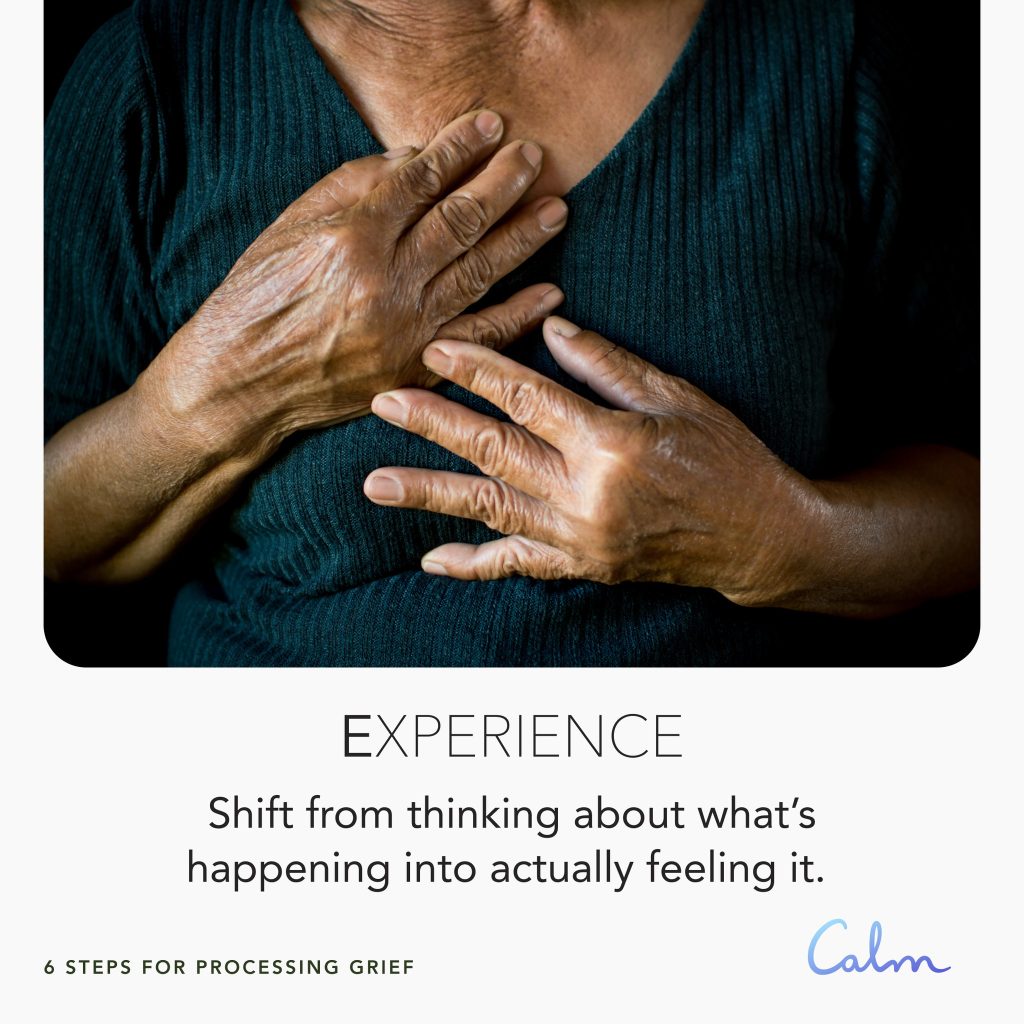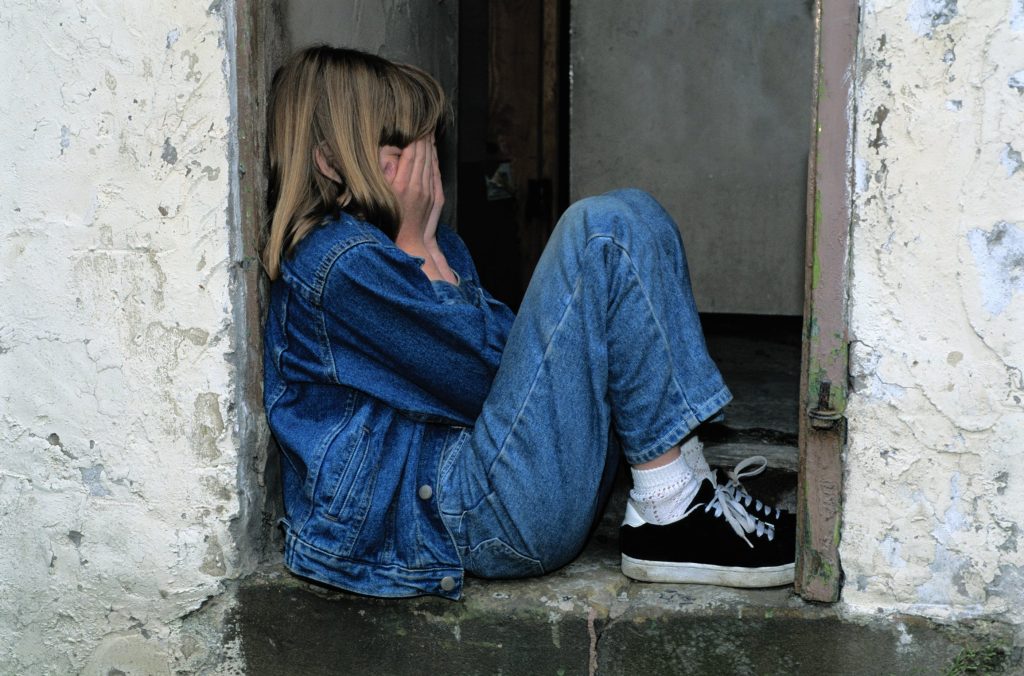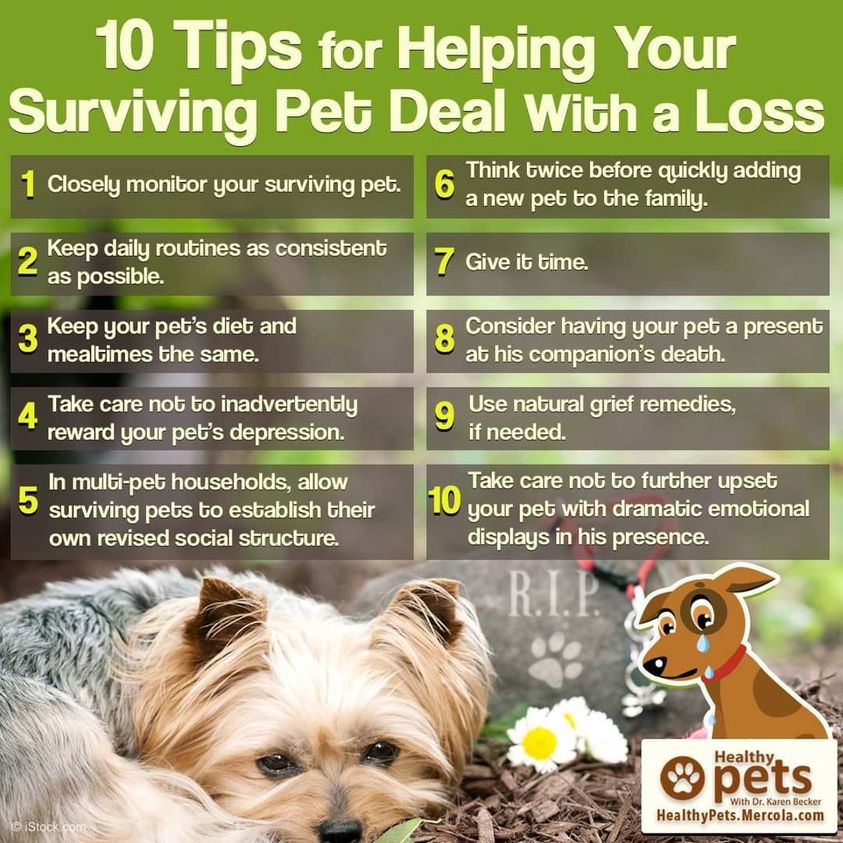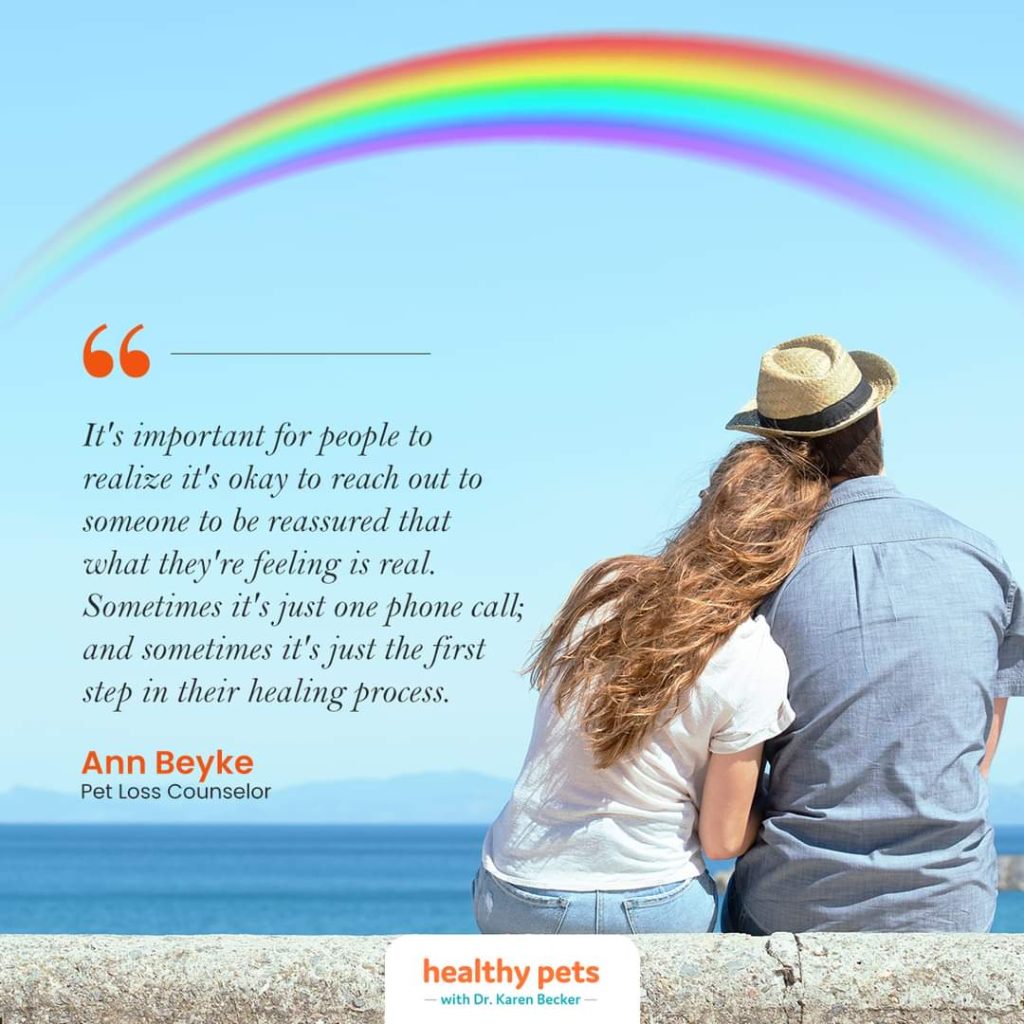
COPING WITH THE LOSS OF A BELOVED PET IS NOT EASY AND THIS PROCESS MAY DIFFER FOR FAMILY MEMBERS AND PETS.
Losing a beloved pet is an emotionally challenging experience that can evoke profound grief and sadness. Pets become cherished members of our families, offering unconditional love and companionship. Coping with their loss requires acknowledging and processing the unique bond shared with them. It’s essential to allow yourself the space to grieve after such a loss and in a way that works for you. Remembering the joy and positive moments shared with the pet can be a healing aspect of the grieving process. While the pain of loss may be intense, finding healthy ways to cope and honoring the memory of the departed furry friend can ultimately contribute to the healing journey. The loss of a pet can permanently impact your life. If loving our pets has changed our lives, it should not come as a surprise that losing them will do the same. We are the ones left behind, but we are not alone!
In my first article, I talked about grief, the stages of grief, the comorbidities of grief, a visualization exercise that helped me, pet loss resources, getting a new pet, and preparing for the Rainbow Bridge decision. In last week’s article, part two, I shared some of what I have learned and experienced about grief in the last year. We need a book series on this topic, but today I will touch on some basics of coping with that loss.
So first, there is certainly a stigmatization about grief that accompanies pet loss, yet grief is grief and loss is loss. Dr. Karen Becker shares that in her experience, and I agree, a lot of people feel their grief at the loss of a pet is unjustified because, after all, it’s not like they lost a human. This, of course, is a misconception and we should work hard at changing society’s perception about it. The grieving individual is now concerned not only about facing this overwhelming sadness and grief but also about getting help to deal with it.

NAVIGATING THE RAINBOW BRIDGE JOURNEY
People tend to say that time will heal but I don’t believe time can heal. In time, to protect our sanity, I think the wound does close and is covered with scar tissue, the pain lessens or might be gone, but the scar, the sadness or reminder of it, may remain. We don’t need healing from grief, but rather from the pain that accompanies it. Actively working through the pain and staying present can bring healing. Hopefully, in time the grief doesn’t consume us anymore or becomes less overwhelming, but time won’t change the fact that you need to grieve. People who are really struggling with the loss of an animal companion, usually have trouble accepting that they’re hurt. You need to accept that you hurt, experience those emotions and take or make time to grieve.
You also have to forgive yourself when there are feelings of guilt. You did the best you could and animals are very forgiving. Your pet would want you to laugh and enjoy and give a home to others. I don’t think animals fear death……they live in the now and by staying in the present and connected, our healing begins too.
In 2022 Dr. Karen Becker hosted a pet-loss-grief-awareness week to help us cope with this loss. Here are some of the interviews to watch about this topic:
- Nancy Gordon Global, a loss and transformational grief specialist, helps you understand and cope with anticipatory grief and anxiety during your pet’s final chapter.
- Dr. Dani McVety, the founder and CEO of Lap of Love Veterinary Hospice and In-Home Euthanasia, helps you better understand hospice care and euthanasia.
- Moira Allen, author of “Coping With Sorrow on the Loss of Your Pet” and owner of The Pet Loss Support Page website, shares wisdom and guidance on how to care for your emotional well-being when you feel grief and guilt while caring for a pet whose health is failing.
- Colleen Rolland is the president of the Association for Pet Loss and Bereavement (APLB), an organization where grieving pet owners can seek support. Colleen covers anticipatory grief, how to overcome the 5 stages of grief, and the amazing work of APLB in helping people cope with their loss.
- Cole James is the executive director of the Grief Recovery Institute. He teaches effective methods to help you heal from the heartbreak of losing an animal companion.
- Ann Beyke discussed how expressing heavy feelings and talking to someone can help pet parents who lost their precious companion move on from grieving to recovery.
- Carol Bryant, is a journalist, dog mom, and blog owner of Fidose of Reality. Learn how to memorialize a beloved pet in ways that are comforting and therapeutic, and why it’s important to seek support and professional help if necessary.
The Calm App also shares 6 steps to help process grief by Lama Rod Owens.






DEPRESSION TIPS
We all have our on and off days and it is ok. Here are some small things you can do to help on those off days.
- Shower or bath.
- Moisturize everything.
- Put on clean, comfortable clothes.
- Drink cold water.
- Clean something.
- Blast music.
- Make food.
- Make something.
- Take a walk because exercise is the most underutilized antidepressant.
- Go outside.
- Call someone.
- Find something to be grateful for! Think of happy times and share happy stories.
- BREATHE! This Calm App is a great tool for this. More specific for anxiety, abdominal or lateral breathing might be helpful, but just breathe deeply!
MEN GRIEF DIFFERENTLY
Navigating the grieving process in the face of a critically ill or deceased cherished pet is a deeply individual experience, and men and women often manifest their reactions in unique ways. Failing to comprehend and embrace these diverse grieving styles can lead to interpersonal challenges and conflicts within families and couples during this challenging period. The decisions surrounding expensive diagnostic procedures, euthanasia considerations, and post-death care for the pet’s body add complexity to an already emotional time. Misinterpretations of behaviours, misunderstandings of needs, and unmet expectations further contribute to the intricacies of grieving. Stereotypes play a role as well; societal expectations often pressure men to embody traits of toughness, confidence, rationality, and control.
Men typically channel their grief through physical actions, engaging in goal-oriented activities as a means of coping. This proactive approach can mislead observers into believing men are further along in the grieving process than they might be. It is crucial not to assume a man’s emotional state, even if he appears composed. When uncertainties arise, open communication becomes vital, as a man’s expression of anger may be a manifestation of grief rather than a reflection of personal feelings. Understanding that some men may even experience the loss of a pet as more profound than the loss of a parent needs a compassionate acknowledgement during this journey of grieving.
Read more on this here.

CHILDREN AND GRIEF
Someone shared with me about the loss of her first dog when she was quite young and that she remembers how her parents did not know how to handle it. That affected her bond with other animals and the way she processed that loss and those to follow.
Coping with the loss of a beloved pet is a challenging experience and sadness can be a really big emotion for children. It can be particularly impactful for children, as it often serves as their initial encounter with death and the loss of a pet is the first major grieving experience for a child.
The process is marked by a range of emotions, from trauma to confusion, and overwhelm, that may be difficult for young minds to comprehend. However, this difficult moment can become a powerful learning experience, laying the foundation for understanding and navigating future losses. Anticipating numerous questions from your child is common, providing insight into the level of information they need to begin processing the loss. Patience is key, as children may ask the same questions repeatedly. The circumstances of the pet’s passing also play a role in this delicate conversation.
Family pets, as cherished members, contribute love, companionship, and joy to our lives and those of our children. Balancing personal grief while guiding children through their own emotional journey can feel like a substantial burden. It’s essential not to feel obligated to project false strength but rather to engage in the process of teaching them about grief. Children may struggle with profound sadness, and their grief may manifest in short, intermittent bursts over an extended period. Offering activities or transitions to different tasks, such as play, can help prevent them from feeling overwhelmed. Just don’t avoid the feelings.
When discussing death with children, using concrete language like “died,” “dead,” or, in the case of euthanasia, “helped to die” provides clarity. Avoiding euphemisms, such as “put to sleep,” helps prevent confusion and potential fears, especially around bedtime. Sharing your own feelings of grief with your child, appropriately tailored to their level of understanding, can normalize the experience and convey that such emotions are valid and that we may not grieve in the same way. This open communication fosters healthy coping mechanisms for grief and loss both now and in their future experiences.
More resources for helping children cope with pet loss:
- A child activity book developed and illustrated by Katie Nurmi
- Rainbow Bridge Raina is also a unique page for kids (and adults) with a grieving heart.
Rainbowbridge.com shares helpful tips for the grieving child which include the following as well as age-related tips:
1. Giving the child permission to work through their grief.
- Tell their teacher about the pet’s death.
- Encourage the child to talk freely about the pet.
- Give the child plenty of hugs and reassurance.
- Discuss death, dying, and grief honestly.
2. NEVER say things like “God took your pet,” or the pet was “put to sleep.”
- The child will learn to fear that God will take them, their parents, or their siblings.
- The child will become afraid of going to sleep.
3. Include the child in everything that is going on.
4. Explain the permanency of death.

HELPING YOUR PET COPE WITH LOSS
Losing an animal companion can be difficult, including for the dogs or other pets in the household that lost their best buddy. While they might not understand the full extent of human absence, animals do understand the emotional feeling of missing someone who’s no longer a part of their daily lives.
Here are some signs of grief in our animal companions:
- Changes in sleeping patterns.
- Changes in eating habits.
- Lack of interest in normal activities like playing.
- Reluctance to be in a room or home alone, or away from human family members.
- Wandering the house, searching for their lost friend.
- Fearful behaviour.
10 Tips by Dr. Karen Becker for helping your pet deal with loss:
- Closely monitor your surviving pet.
- Keep your pet’s diet and mealtimes the same.
- Take care not to inadvertently reward your pet’s depression
- Keep daily routines as consistent as possible.
- Take care not to further upset your pet with dramatic emotional displays in their presence.
- Think twice before quickly adding a new pet to the family in multi-pet households.
- Allow surviving pets to establish their own revised social structure.
- Consider having your pet present at his companion’s death.
- Give it time.
- Use natural grief remedies, if needed.
I often find that because we don’t want to grieve alone, we want others to grieve with us, including the pets that are still alive. Some animals that were closely bonded do grieve more, but be careful that you don’t project your feelings onto your pets. Their behaviour might just change because they feel your emotions.

WAYS TO REMEMBER YOUR PET
Create a Memorial: Design a dedicated memorial space in your home or garden with photos, candles, and perhaps a personalized plaque or memorial stone.
Keepsakes: Preserve memories with keepsakes like paw prints, fur clippings, or a favourite toy. Some services even offer jewellery made from ashes.
Plant a Tree or Flower: Choose a special spot to plant a tree, shrub, or flowers in honor of your pet, creating a living tribute.
Custom Artwork: Commission or create artwork, such as a painting or a framed photo collage, to capture the essence of your pet.
Write a Tribute: Compose a heartfelt letter, poem, or story about your pet’s life, capturing the joy they brought.
Donate in Their Name: Contribute to a charity or animal welfare organization in your pet’s name, supporting a cause they would appreciate.
Hold a Memorial Ceremony: Arrange a small gathering or ceremony with friends and family to share memories, celebrate their lives, and provide support.
Digital Remembrance: Create a digital tribute, perhaps a photo album or a social media post sharing your favourite moments with your pet.
Compile a Scrapbook or Photobook: Organize pictures, notes, and mementos in a scrapbook that chronicles your pet’s life and the special times you shared.
Keep Their Collar or Tag: Retain a physical reminder by keeping your pet’s collar, tag, or favourite accessory.
Remember, the key is to choose a memorial that feels meaningful and reflective of the unique bond you shared with your pet.
HOW TO RESPOND TO THE GRIEF OF OTHERS
When someone is struggling with the loss of a pet or a loved one, many people feel uncertain about how to respond, often avoiding the topic altogether. In my experience, a more supportive approach is for those grieving to openly acknowledge their pain, allowing those close to them to express empathy, check in regularly, and convey that they are thinking about them.
If someone is hurting, simple phrases like “sorry for your loss” and “I am here for you” are appropriate and enough. It’s important not to dictate how someone should feel; instead, validate their emotions. Expressing understanding and acknowledging their feelings is more comforting than offering personal perspectives. Emotions need recognition before they can be effectively navigated and regulated.
Being present for them is crucial, recognizing that some may prefer space while others appreciate regular check-ins or a combination of both. One friend brought me flowers and family member food. That meant a lot.
If you are a boss and your employee experience this loss, be considerate and kind as you would with human loss. Never tell anyone who lost a beloved pet, “that it is just an animal”. That shows that you lack understanding and compassion. Also, never suggest or even get a new pet for them soon after the death. It is very incensitive.

REMEMBER
- Ensure that all family members are supported and understand that not all may experience the loss the same way.
- Make time to grieve.
- Make sure your other pets are ok as animals grieve too.
- Other people, especially those without pets, don’t realize that the experience can be just as traumatic as losing a parent or child.
- A physical memorial can provide comfort.
- Don’t make any big or quick decisions like getting a new pet during this time.
- Be supportive and considerate if someone experienced the loss of a pet.
- Remember to mention and thank the people who’ve given you support during those hard days.
WHEN TO SEEK PROFESSIONAL HELP?
No one heals in a straight line. Grieving is individual and you need to heal at your own pace, taking it one day at a time. If you have experienced physical changes after the loss of a beloved pet, like weight loss or weight gain, chronic headaches, stomach-aches, or trouble sleeping, if you can’t function, if you can’t hold work, if you can’t have enjoyment, then professional help would be something to consider. If you have a gut feeling that you need to talk to someone, listen to your gut and reach out.
OTHER RESOURCES
There are many support groups online and it does help to be with people who understand and support you. Here are two of them:
- Pet Soul Grief and Loss Support
- Pet Loss Support Group
- Marin Humane Organization also offers a free, monthly support group (now via Zoom) for those who’ve lost pets. To learn more, go to marinhumane.org/get-involved/events. There are also many other support groups for individuals who lost pets.
- Rainbowbridge.com grief centre.
Books
- Pet Loss: A Thoughtful Guide for Adults and Children, by Herbert A. Nieburg and Arlene Fischer
- I Heard Your Dog Died: Imaginings for Those Who Have Lost a Pet, by Bonnie Kreitler
- The Loss of a Pet: A Guide to Coping with the Grieving Process When a Pet Dies, by Wallace Sife
- Coping With Sorrow on the Loss of Your Pet, by Moira Anderson Allen
Coping with pet loss is a highly personal journey, with each person experiencing a range of emotions unique to them. Finding solace in meaningful remembrances, be it through memorials or keepsakes, helps navigate the grief. It’s crucial to recognize that people grieve differently, and the support of understanding friends and family can be invaluable. By allowing space for individual expressions of grief and honoring cherished memories, one can gradually embrace resilience while acknowledging the enduring love and companionship shared with a beloved pet. Reach out for support when you need to, but most of all, make time to grieve!
Next week we will look at some Christmas holiday safety tips.
WHEN YOU KNOW BETTER, DO BETTER!